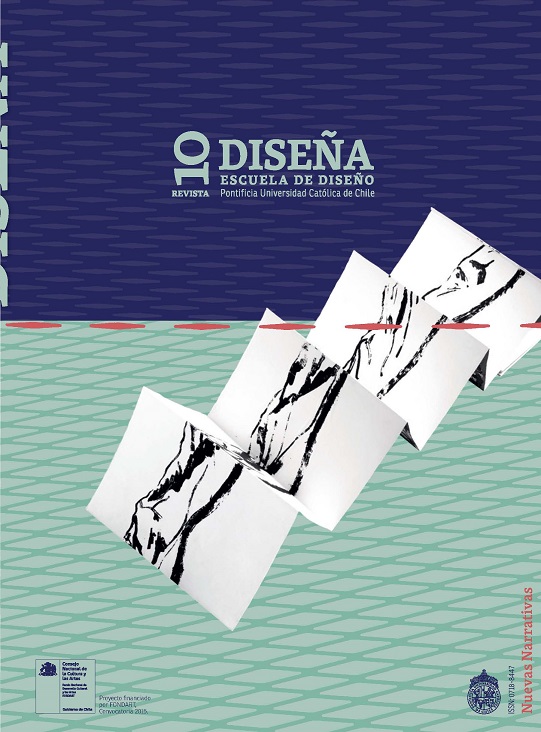Narratives for an Extended Urban Design: Urban Hacking and Appropriation in La Chimba Neighborhood
Main Article Content
Abstract
The last years have witnessed the development of a questioning of the top-down character in urban planning and the inefficiencies sometimes evidenced by bureaucratic and centralized programs when dealing with the problems of the city. Consequently, there are today different terms (“open-source urban planning”, “do-it-yourself urban planning”, “smart citizens”, “participative urban planning”, “tactic urban planning”, etc.) to refer to more distributed, located and temporary forms of urban design. This scenario has led several authors to rethink the social, material and political conditions for a citizens’ urban planning that can bring into existence the right to a city and to the self-production of urban infrastructures. Starting from an urban hacking project with homeless persons in La Chimba neighborhood, this article explores the possibilities of this type of interventions, particularly in respect to the redistribution of abilities between the experts and the lay person, between designer and non-designer. The description of the different prototyping phases of the project evidence a move from a user-centered design to a collaborative end extended design, where those affected are no longer treated as mere users, but start to become co-designers and visualizers of their own lives.
Downloads
Article Details

This work is licensed under a Creative Commons Attribution-ShareAlike 4.0 International license.
COPYRIGHT NOTICE
All contents of this electronic edition are distributed under the Creative Commons license of "Attribution-ShareAlike 4.0 Internacional" (CC-BY-SA). Any total or partial reproduction of the material must mention its origin.
The rights of the published images belong to their authors, who grant to Diseña the license for its use. The management of the permits and the authorization of the publication of the images (or of any material) that contains copyright and its consequent rights of reproduction in this publication is the sole responsibility of the authors of the articles.
References
Bataille, G. (1987). La parte maldita precedida de la noción de gasto (Vol. 46). Barcelona: Icaria.
Corsín Jiménez, A. (2013). Introduction. The prototype: more than many and less than one. Journal of Cultural Economy, 7(4), 381-398.
Corsín Jiménez, A. (2014). The right to infrastructure: a prototype for open source urbanism. Environment and Planning D: Society and Space, 32(2), 342-362.
Corsín Jiménez, A., & Estalella, A. (2013). The atmospheric person: Value, experiment, and “making neighbors” in Madrid’s popular assemblies. HAU: Journal of Ethnographic Theory, 3(2), 119-139.
Debord, G. (1955). Introduction à une critique de la géographie urbaine. Les Lèvres Nues, 6, 11-15.
Deakin, M., & Al Waer, H. (2012). From Intelligent to Smart Cities. London: Routledge.
Domínguez Rubio, F., & Fogué, U. (2013). Technifying public space and publicizing infrastructures: exploring new urban political ecologies through the square of General Vara del Rey. International Journal of Urban and Regional Research, 37(3), 1035-1052.
Farias, I. (2012). Introduction: decentring the object of urban studies. En Farias, I. & Bender, T. (Eds.) Urban assemblages: How actor-network theory changes urban studies (pp. 1-24). Londres: Routledge.
Finn, D. (2014). DIY urbanism: implications for cities. Journal of Urbanism: International research on placemaking and urban sustainability, 7(4), 381-398.
Fontes, A. S. (2012). Intervenções temporárias e marcas permanentes na cidade contemporânea. Arquitetura Revista, 8(1), 31-48.
Fuller, M., & Haque, U. (2008). Urban Versioning System 1.0. Nueva York: The Architectural League of New York Situated Pamphlet Series.
Henderson, K. (1995). The political career of a prototype: Visual representation in design engineering. Social Problems, 42(2), 274-299.
Latour, B. (2008). A cautious Prometheus? A few steps toward a philosophy of design (with special attention to Peter Sloterdijk). Keynote lecture for the Networks of Design meeting of the Design History Society, Falmouth, 3 de setiembre de 2008. Falmouth, Cornwall.
Latour, B., & Hermant, E. (1998). Paris ville invisible. París: La Découverte.
Law, J. & Hetherington, K. (2000). Materialities, Spatialities, Globalities. En J. R. Bryson, P. W. Daniels, N. Henry & J. Pollard (Eds.). Knowledge, Space, Economy (pp. 34-49).
Londres: Routledge.
Márquez, F., & Truffello, R. (2013). Geografías de un territorio de frontera: La Chimba, Santiago de Chile. Siglo XVII-XXI. Revista de Geografía Norte Grande, 56, 75-96.
Norman, D. N. (1988). The design of everyday things. Nueva York: Doubleday.
Sassen, S. (2011). Open source urbanism. The new city reader: a newspaper of public space, 15, recuperado de: http:// www.domusweb.it/en/op-ed/2011/06/29/open-source-urbanism.html
Schüll, N. D. (2012). Addiction by design: Machine gambling in Las Vegas. Nueva Jersey: Princeton University Press.
Sennett, R. (2009). El artesano. Barcelona: Anagrama.
Shelton, T., Zook, M., & Wiig, A. (2014). The ‘actually existing smart city’. Cambridge Journal of Regions, Economy and Society, 8, 13-25. doi: 10.1093/cjres/rsu026.
Sloterdijk, P. (2009). Rules for the Human Zoo: a response to the Letter on Humanism. Environment and Planning D: Society and Space, 27(1), 12-28.
Star, S. L., & Griesemer, J. R. (1989). Institutional ecology, translations’ and boundary objects: Amateurs and professionals in Berkeley’s Museum of Vertebrate Zoology, 1907-39. Social Studies of Science, 19(3), 387-420.
Tironi, M., & Allard, J. (2016). Ciudades en Beta: de las Smart Cities a los Smartcitizens. Santiago: Escuela Diseño, Pontificia Universidad Católica de Chile.
Tironi, M. (2015). (De) politicising and Ecologising Bicycles: The history of the Parisian Vélib’system and its controversies. Journal of Cultural Economy, 8(2), 166-183.
Tironi, M., & Sánchez Criado, T. (2015). Of Sensors and Sensitivities. Towards a Cosmopolitics of “Smart Cities”? Tecnoscienza: Italian Journal of Science & Technology Studies, 6(1), 89-108.
Tironi, M., Hermansen, P., & Neira, J. (2014). El prototipo como dispositivo cosmopolítico: etnografías de prácticas de diseño en el Zoológico Nacional de Chile. Revista Pléyade(14), 61-95.
Vanolo, A. (2013). Smartmentality: The smart city as disciplinary strategy. Urban Studies, 51(5), 883-898.
Yaneva, A. (2015). Introduction: What is cosmopolitical Design. En A. Yaneva & A. Zaera-Polo (Eds.), What Is Cosmopolitical Design? Design, Nature and the Built Environment (pp. 1-20). Aldershot: Ashgate.
Wilkie, A. (2014). Prototyping as Event: Designing the Future of Obesity. Journal of Cultural Economy, 7(4), 476-492.

